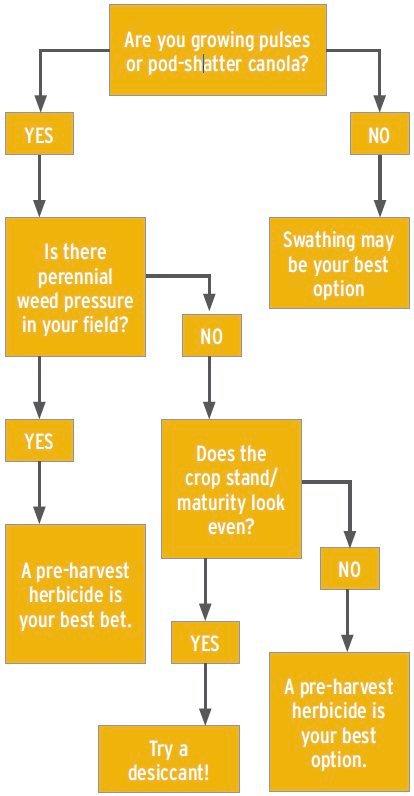1-2-3S OF CANOLA HARVEST PREP
If your plan is to straight cut your canola at harvest, the first step toward that goal is to purchase a variety with pod-shatter technology. Keep in mind that it is just a first step and not an automatic pass to straight cutting. A lot can happen over a growing season, such as excessive heat, drought, hail and wind that can impact how best to harvest that canola. Ultimately, deciding whether to straight cut or swath comes down to crop and field condition, late-season weed pressure and weather. Here are the three things to consider as harvest time approaches;
1. Assess your crop for best harvest method.
If you're growing a canola with pod-shatter technology, it's a good idea to check the field to make sure conditions are conducive for straight cutting. Assess each field individually and look for uniform maturity, a well-knit canopy and healthy, intact pods. If the risk of frost is low, the field could be a good candidate for straight cutting. Also, seed moisture takes longer to drop in a standing crop, so factor that into your decision. If the crop is not uniform, thin, has damaged or compromised pods from insects, disease or hail, or if frost is imminent, swathing is probably the better option.
2. Pre-harvest applications.
If you're straight cutting, a pre-harvest application of a desiccant or herbicide will help speed up dry down and control late season weeds. Which one is best? If weed control is a driving issue, then choose a systemic herbicide. This will move into the roots, killing weeds and preventing perennial regrowth while drying down the crop itself. If your field is fairly clean and you just want to get harvesting fast, use a desiccant. Because they work on contact, a desiccant will dry your crop down much faster than a pre-harvest herbicide, but it will not actually kill weeds or prevent regrowth.
3. Need to swath?
If conditions are such that swathing is your best harvest option, make sure the field is at 60% seed colour change before getting to work. You can start checking this about 10 days after flowering ends, and keep in mind that, on average, seed colour change increases by about 10% every two to three days, depending on weather conditions. When the crop is ready, try to swath when it's cool, such as early in the evening or morning, to help lower the chance of green seed by encouraging a slower drydown.
Your UFA CAMs are here to help you choose the best pre-harvest or desiccant for your field.
